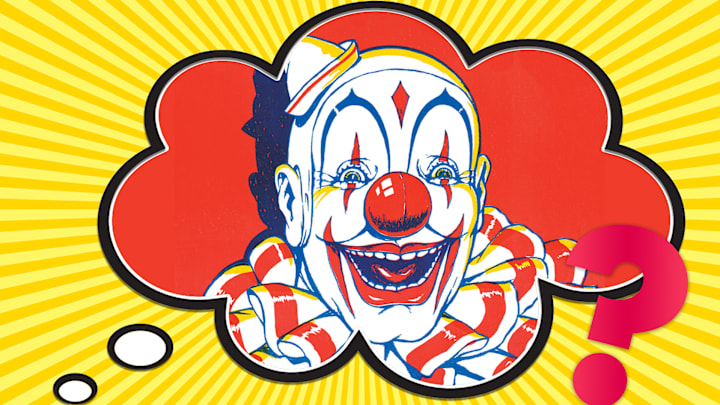With box office hits like Stephen King’s It, it’s safe to say that coulrophobia (fear of clowns) isn’t a fringe phenomenon. The colorful circus performers are right up there with vampires and werewolves on the list of iconic horror villains. But unlike other movie monsters, clowns were originally meant to make kids laugh, not hide under their beds in terror. So what is it about clowns that taps into our deepest fears?
From Court Jester to Creepy Clown
This pervasive part of our culture has a long history. As Danielle Bainbridge explained in the inaugural episode of the PBS digital series Origin of Everything, the unsettling clown stereotype goes back centuries.
Before clowns wore floppy shoes and threw pies at each other’s faces, early versions of the performers could be found in royal courts. The court jester wasn’t evil, but he was the only person in the kingdom who could poke fun at the monarch without fear of (literally) losing his head. The fact that fools didn’t fall within the normal social hierarchy may have contributed to the future role clowns would play as untrustworthy outsiders.
From the medieval era, clowns evolved into the harlequins of 16th-century Italian theater. Again, these weren’t bloodthirsty monsters, but they weren’t exactly kid-friendly either. The characters were often mischievous and morally bankrupt, and their strange costumes and masks only added to the creepy vibes they gave off.
Judging a Clown By Its Makeup
Fast-forward to the 19th century, when the white-faced circus clowns we know today started gaining popularity. Unlike the jesters and harlequins that came before them, these clowns performed primarily for children and maintained a wholesome image.
But though these clowns were meant to be kid-friendly, their heavy makeup wound up giving them a more unsettling vibe.
As researchers behind a 2023 study published in Frontiers in Psychology explained, a clown’s heavy makeup can make it difficult for people to read their facial expressions, causing a sense of unease. It can be hard to tell what emotions a clown is hiding behind their big, blood-red smile. And speaking of their affinity for highly pigmented lipstick: A clown’s stereotypically white face and bright red lips may also make people subconsciously think of disease—a subject that is certainly more scary than funny.
Pop culture in the 1970s, ’80s, and ’90s showed us that the old perception we had of clowns as nefarious troublemakers never really went away. Steven King’s It, the cult classic Killer Clowns From Outer Space (1988), and that scene from Poltergeist (1982) all combined these original fears with the more modern association of clowns with children. That formula gave us one of the most frightening figures in horror media today.
Have you got a Big Question you’d like us to answer? If so, let us know by emailing us at bigquestions@mentalfloss.com.
Read More About Fear:
A version of this story originally ran in 2018; it has been updated for 2024.
